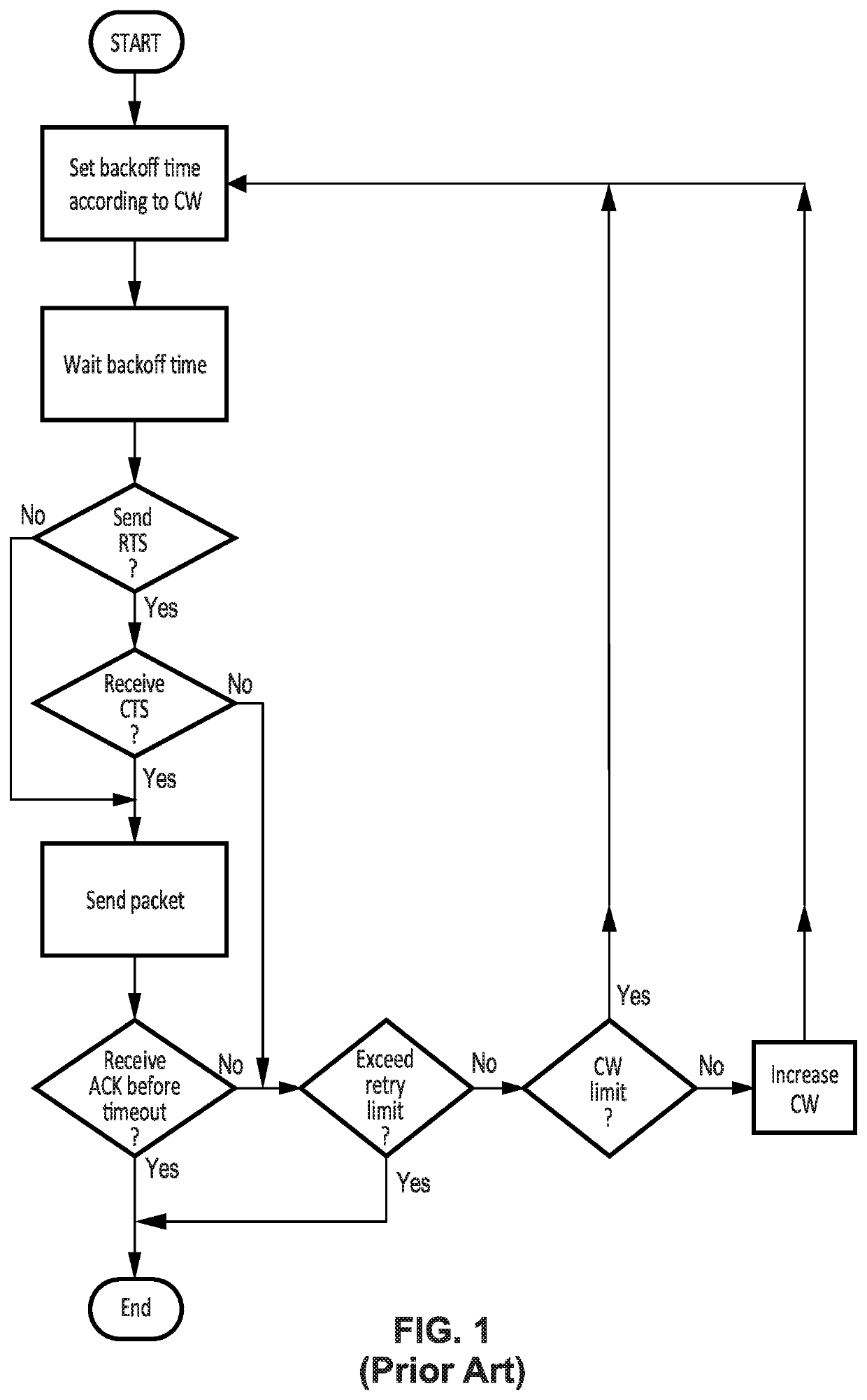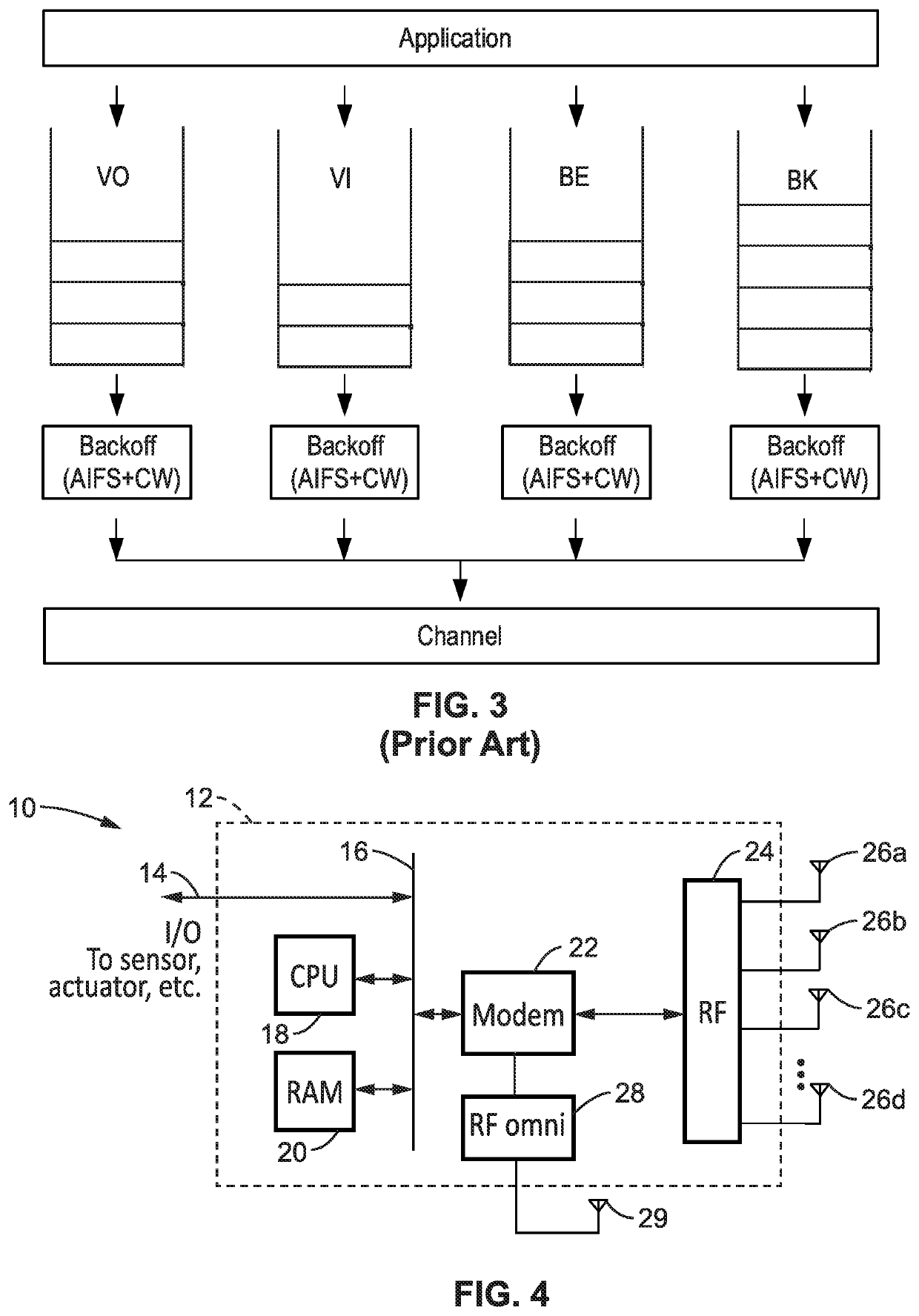Rta interface between mac and app layer
a technology of rta interface and mac, applied in the field of wireless network communication, can solve the problems of unable to meet the low latency requirements of rta packets, address controlling latency, and more difficult task of creating an rta interface between mac and app layer
- Summary
- Abstract
- Description
- Claims
- Application Information
AI Technical Summary
Benefits of technology
Problems solved by technology
Method used
Image
Examples
Embodiment Construction
1. 802.11 WLAN System Introduction
[0076]1.1. CSMA / CA Operation
[0077]FIG. 1 depicts the details of a WLAN system under IEEE 802.11 using Carrier Sense Multiple Access / Collision Avoidance (CSMA / CA) to allow stations (STAs) to have random access to the channel for packet transmission and retransmission. In a CSMA / CA system, the STA senses the channel for transmission when there is data to be transmitted. Before each transmission and retransmission, the STA must sense the channel and set (wait) a backoff time to contend for channel access.
[0078]The backoff time is decided by a uniform random variable between zero and the size (duration) of the contention window. After the STA waits for the backoff time and senses that the channel is idle, it decides whether to send an RTS frame to ensure channel occupancy or not. If the STA sends an RTS frame, the channel occupancy is ensured when it receives a CTS frame, at which time the STA sends the packet. If the STA does not send an RTS frame, it ...
PUM
 Login to View More
Login to View More Abstract
Description
Claims
Application Information
 Login to View More
Login to View More - R&D
- Intellectual Property
- Life Sciences
- Materials
- Tech Scout
- Unparalleled Data Quality
- Higher Quality Content
- 60% Fewer Hallucinations
Browse by: Latest US Patents, China's latest patents, Technical Efficacy Thesaurus, Application Domain, Technology Topic, Popular Technical Reports.
© 2025 PatSnap. All rights reserved.Legal|Privacy policy|Modern Slavery Act Transparency Statement|Sitemap|About US| Contact US: help@patsnap.com



